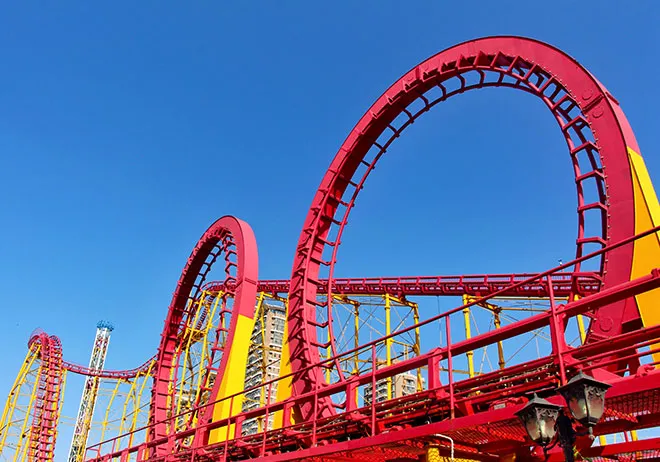- Albanian
- Arabic
- Belarusian
- Bengali
- Czech
- English
- French
- German
- Hebrew
- Hungarian
- Indonesian
- irish
- Italian
- Japanese
- kazakh
- Persian
- Russian
- Thai
- Uzbek
- Vietnamese
Creative Designs for Roller Coaster Track Layouts and Blueprints
The Art and Science of Roller Coaster Track Design
Roller coasters are a captivating blend of art, engineering, and physics, drawing millions of visitors to amusement parks every year. One of the most critical components of a roller coaster is its track, which must be meticulously designed to create an exhilarating experience while ensuring rider safety. This article explores the key elements involved in roller coaster track drawing and design.
The Basics of Roller Coaster Tracks
A roller coaster track provides the structural framework that supports the ride's cars as they speed through loops, drops, and twists. Typically made from steel or wood, these tracks are engineered to withstand immense forces exerted by both the weight of the riders and the high speeds involved in the ride. Steel tracks are known for their smoothness and ability to support intricate designs, whereas wooden tracks offer a classic feel with a unique sensory experience often described as bumpy.
Design Considerations
Creating a roller coaster track begins with a thorough understanding of physics. Designers must factor in gravity, inertia, and centripetal forces to craft a thrilling yet safe ride. During the design phase, computer software is commonly used to simulate how the coaster will perform, allowing engineers to visualize the ride’s dynamics without physical prototypes.
One of the primary elements is the height and slope of the initial drop. A steeper drop typically translates to higher speeds, resulting in a more adrenaline-pumping experience. However, if the drop is too steep or abrupt, it can lead to safety issues, such as excessive G-forces acting on the riders. Therefore, finding the optimal angle is crucial.
Creating the Track Layout
The track layout is where creativity shines. Designers strive to create a unique experience, often incorporating elements such as loops, corkscrews, and heartline rolls. The track drawing must be carefully crafted to maintain a balance between excitement and rider comfort. For instance, the transition between loops must be smooth enough to prevent discomfort from sudden jolts.
roller coaster track drawing

Crafting a successful roller coaster track also involves understanding the psychology of thrill-seekers. Elements such as the “airtime hill” create a moment where riders feel weightless, providing a unique thrill that is highly sought after. Elements are placed strategically throughout the course to enhance the experience, often with surprising drops or unexpected direction changes to keep riders on their toes.
Safety Regulations
In addition to the thrilling experience, safety remains paramount in roller coaster design. Regulatory bodies impose strict guidelines covering everything from the materials used to the engineering standards that must be met. Each aspect of the track must be regularly inspected and tested to ensure it can handle the stresses of operation.
Track designs often undergo numerous revisions based on testing results, ensuring everything functions as intended. Emergency brakes, safety harnesses, and evacuation protocols are essential components of the overall design, allowing for a safe environment even when the unexpected happens.
Real-world Implementation
Once the track drawing has been finalized, it transitions into the construction phase. Skilled welders and laborers work meticulously to bring the designs to life, often spending months on-site. The final product is a feat of engineering marvel that stands tall, waiting to provide thrills to riders.
Conclusion
Roller coaster track drawing is a fascinating interplay of art, engineering, and safety. From the initial sketch to the final construction, the process requires a deep understanding of both design principles and the physics of motion. Through innovative designs and a dedication to safety, roller coasters continue to evolve, providing thrilling experiences that captivate the hearts of riders around the world. Whether you’re a seasoned enthusiast or a curious newcomer, there's nothing quite like the rush of a roller coaster ride, and it all begins with the intricate drawing of its track.
-
Flume Ride-Hebei Zhipao Amusement Equipment Manufacturing Co., Ltd.|Thrilling Water Attraction&Customizable DesignJul.30,2025
-
Flume Ride - Hebei Zhipao Amusement Equipment | Water Coaster, Thrilling DescentJul.30,2025
-
Flume Ride - Hebei Zhipao | Thrilling Water AttractionJul.30,2025
-
Flume Ride: Thrilling Water Attraction by Hebei Zhipao|Log Flume Manufacturers&Flume Ride DesignJul.30,2025
-
Flume Ride-Hebei Zhipao Amusement Equipment Manufacturing Co., Ltd.|Thrilling Water Coaster, Safe DesignJul.30,2025
-
Flume Ride-Hebei Zhipao Amusement Equipment Manufacturing Co., Ltd.|Thrilling Water Attraction, Safe DesignJul.30,2025
